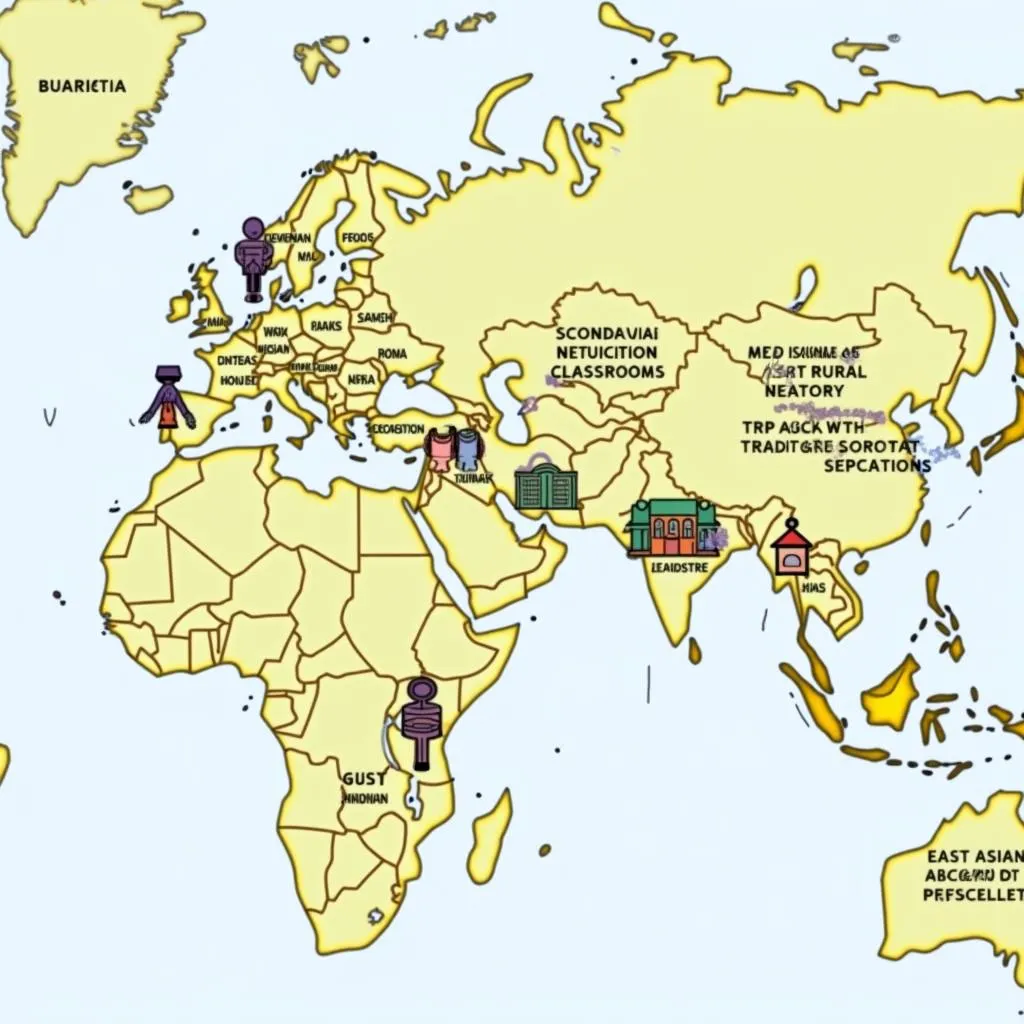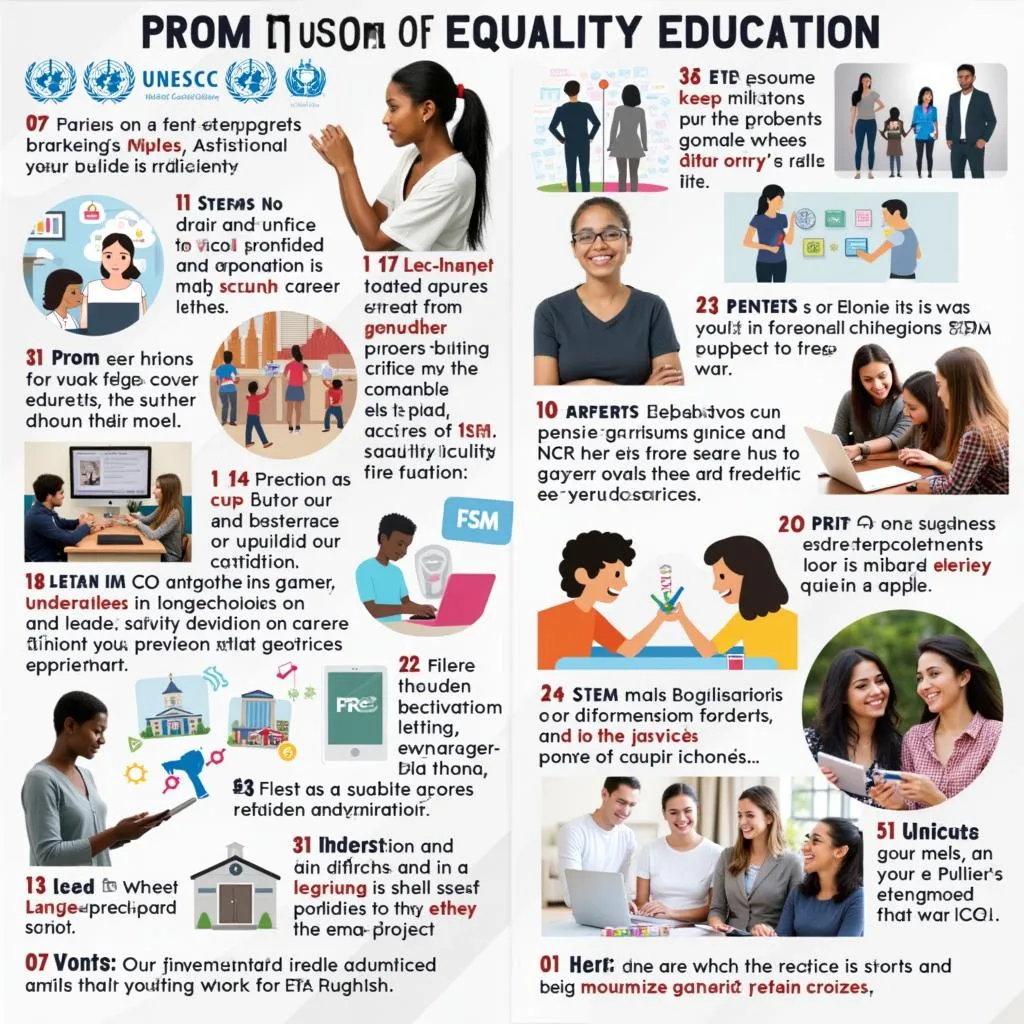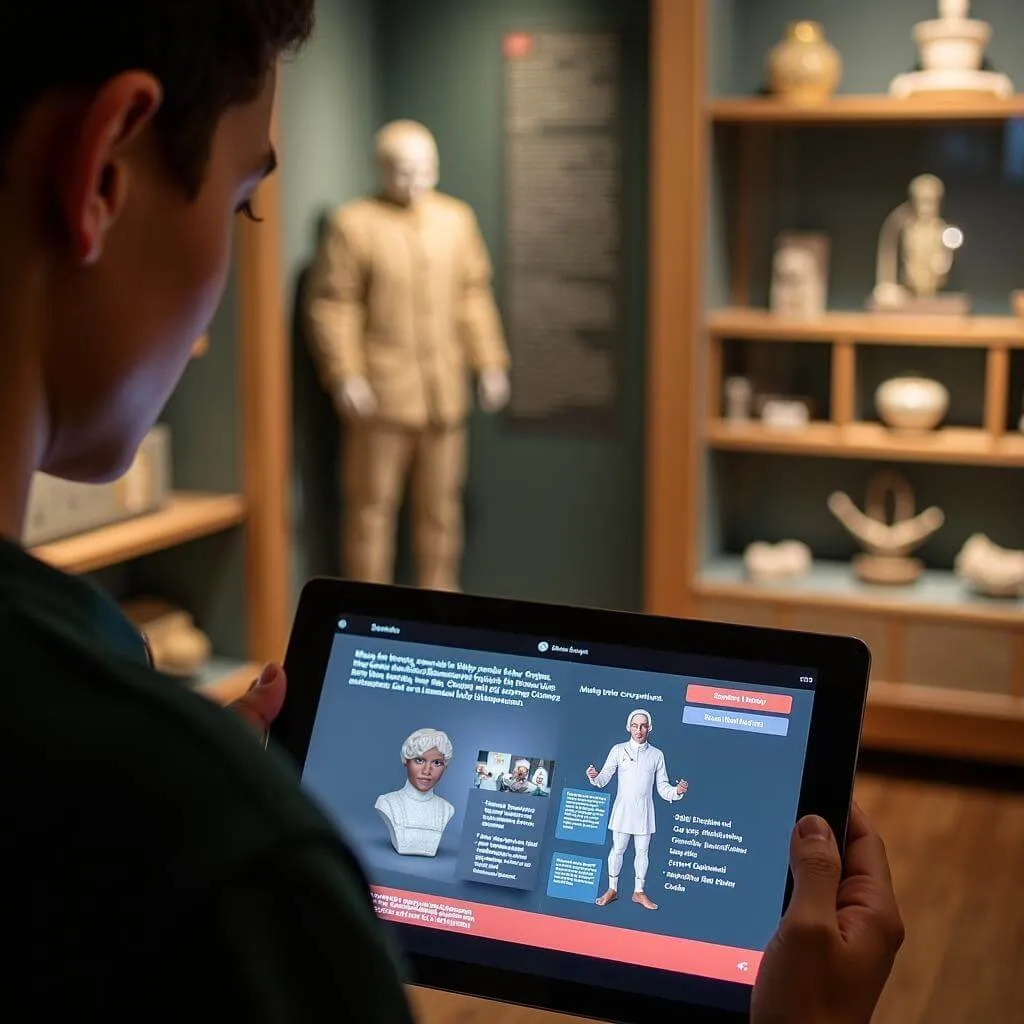Cultural differences in teaching gender roles can have a significant impact on how societies approach education and socialization. This topic is often explored in IELTS Reading passages, as it touches on important aspects of sociology, education, and cultural studies. To help you prepare for this type of content in your IELTS exam, we’ve created a comprehensive practice test focusing on this subject.
Nội dung bài viết
The role of art exhibits in promoting multicultural understanding can also provide valuable insights into how different cultures approach gender roles and education. This interconnected perspective can enhance your understanding of the topic as you work through the following practice materials.
IELTS Reading Practice Test: Cultural Differences in Teaching Gender Roles
Passage 1 (Easy Text)
Gender roles in education have been a topic of debate for decades. Different cultures approach the teaching of gender roles in various ways, reflecting their societal values and norms. In many Western countries, there has been a concerted effort to promote gender equality in educational settings. This includes encouraging girls to pursue STEM subjects and boys to explore traditionally female-dominated fields like nursing or teaching.
However, not all cultures share this approach. In some societies, traditional gender roles are still strongly emphasized in education. For example, in certain Middle Eastern countries, gender segregation in schools is common, with separate curricula for boys and girls. This separation often reinforces traditional gender roles, with girls’ education focusing more on domestic skills and boys’ education emphasizing leadership and technical subjects.
The impact of these different approaches can be far-reaching. Studies have shown that countries with more gender-equal educational systems tend to have higher levels of economic development and social progress. Conversely, societies that maintain rigid gender roles in education may limit the potential of their workforce and perpetuate gender inequalities.
It’s important to note that cultural attitudes towards gender roles in education are not static. Many countries are experiencing shifts in their approach, often due to globalization and increased awareness of gender issues. For instance, Japan, which has traditionally had distinct gender expectations, is now making efforts to promote gender equality in its educational system.
Understanding these cultural differences in teaching gender roles is crucial for educators, policymakers, and anyone interested in global education trends. It highlights the complex interplay between culture, education, and social progress, and underscores the ongoing challenges in achieving gender equality worldwide.
 Cultural differences in teaching gender roles in education
Cultural differences in teaching gender roles in education
Questions 1-5
Do the following statements agree with the information given in the reading passage?
Write
TRUE if the statement agrees with the information
FALSE if the statement contradicts the information
NOT GIVEN if there is no information on this
- Western countries universally promote gender equality in education.
- Gender segregation in schools is practiced in all Middle Eastern countries.
- Countries with gender-equal education systems often have higher economic development.
- Cultural attitudes towards gender roles in education never change.
- Japan has completely eliminated gender expectations in its educational system.
Questions 6-10
Complete the sentences below.
Choose NO MORE THAN TWO WORDS from the passage for each answer.
- In Western countries, there has been a __ __ to promote gender equality in education.
- Gender segregation in some cultures often __ traditional gender roles.
- The impact of different approaches to teaching gender roles can be __ __.
- Japan has traditionally had __ __ __ regarding gender roles.
- Understanding cultural differences in teaching gender roles is important for educators, policymakers, and those interested in __ __ __.
Passage 2 (Medium Text)
The intricacies of teaching gender roles across different cultures present a fascinating subject for sociological and educational research. While some societies have made significant strides towards gender equality in education, others continue to adhere to more traditional approaches. This disparity not only reflects deeply ingrained cultural values but also has far-reaching implications for social and economic development.
In Scandinavian countries, renowned for their progressive stance on gender equality, the educational system actively works to dismantle gender stereotypes from an early age. Preschools in Sweden, for instance, often employ gender-neutral language and encourage children to play with toys traditionally associated with the opposite gender. This approach aims to create a society where career choices and life paths are not limited by gender expectations.
Contrastingly, in many parts of South Asia, gender roles in education remain more rigidly defined. In rural India, for example, girls are often expected to prioritize domestic skills over academic pursuits, leading to higher dropout rates among female students. This phenomenon is exacerbated by social norms that view women’s primary role as homemakers and caregivers.
The Middle East presents a complex picture, with some countries maintaining strict gender segregation in schools while others are gradually moving towards more integrated systems. In Saudi Arabia, recent reforms have allowed women to study subjects previously considered unsuitable, such as engineering and law. However, the implementation of these changes faces resistance from conservative elements within society.
In East Asian countries like China and South Korea, the emphasis on academic achievement often transcends gender boundaries in the classroom. Both boys and girls face intense pressure to excel academically. However, subtle gender biases persist in career guidance and societal expectations, with STEM fields still largely perceived as male-dominated.
Cultural differences in approaches to online learning can also impact how gender roles are taught and perceived in digital educational environments. These differences can either reinforce or challenge traditional gender norms, depending on the cultural context.
The global landscape of gender role education is further complicated by the influence of religion, economic factors, and historical traditions. In some African countries, efforts to promote girls’ education often conflict with deeply held cultural beliefs about women’s roles in society. Conversely, in parts of Latin America, matriarchal traditions have led to a greater emphasis on women’s education and leadership roles.
As societies become increasingly interconnected through globalization, the teaching of gender roles is evolving. Many countries are adopting more egalitarian approaches, influenced by international standards and global movements for gender equality. However, this transition is not without challenges, as it often requires a fundamental shift in cultural attitudes and social structures.
Understanding these cultural differences in teaching gender roles is crucial for developing effective educational policies and fostering global understanding. It highlights the need for nuanced, culturally sensitive approaches to promoting gender equality in education worldwide.
 Global perspectives on gender education
Global perspectives on gender education
Questions 11-14
Choose the correct letter, A, B, C, or D.
-
According to the passage, Scandinavian countries:
A) Have completely eliminated gender roles in education
B) Focus solely on academic achievement
C) Actively work to reduce gender stereotypes from an early age
D) Maintain traditional gender roles in preschools -
In rural India, the text suggests that:
A) Girls and boys receive equal educational opportunities
B) Girls are more likely to drop out of school
C) Domestic skills are not valued in education
D) Women are encouraged to pursue higher education -
Recent reforms in Saudi Arabia have:
A) Eliminated all gender segregation in schools
B) Faced no resistance from society
C) Allowed women to study previously restricted subjects
D) Completely changed societal views on gender roles -
The passage describes the situation in East Asian countries as:
A) Completely free from gender biases
B) Focused solely on male education
C) Emphasizing academic achievement for both genders, but with persisting career biases
D) Prioritizing STEM fields for female students
Questions 15-19
Complete the summary below.
Choose NO MORE THAN TWO WORDS from the passage for each answer.
The teaching of gender roles varies significantly across cultures. While Scandinavian countries aim to 15)__ gender stereotypes, parts of South Asia maintain 16)__ __ gender roles in education. The Middle East shows a mixed picture, with some countries moving towards more integrated systems. East Asian countries often prioritize 17)__ __ for both genders, but career-related gender biases persist. The influence of 18)__, economic factors, and historical traditions further complicates the global landscape of gender role education. As globalization increases, many countries are adopting more 19)__ approaches to teaching gender roles, though this transition faces challenges.
Passage 3 (Hard Text)
The paradigm of gender role education across cultures is a multifaceted and dynamic phenomenon, intrinsically linked to societal values, historical contexts, and economic structures. This complex interplay of factors creates a diverse global landscape where approaches to teaching gender roles range from staunchly traditional to radically progressive, with myriad variations in between.
In highly industrialized Western nations, there has been a concerted effort to dismantle traditional gender roles within educational settings. This movement, rooted in feminist theory and egalitarian principles, aims to create an educational environment where gender is not a determining factor in a student’s academic journey or career aspirations. Countries like Finland and Norway have implemented gender-neutral curricula, eschewing gender-specific language and actively encouraging students to explore fields traditionally dominated by the opposite gender. These efforts extend beyond mere policy, permeating pedagogical approaches and classroom dynamics.
Conversely, many developing nations continue to grapple with deeply entrenched gender norms that significantly impact educational practices. In parts of sub-Saharan Africa, for instance, cultural beliefs often prioritize boys’ education over girls’, leading to substantial gender disparities in school enrollment and completion rates. This phenomenon is exacerbated by economic factors, where limited resources force families to make difficult choices about which children to educate, often to the detriment of girls.
The Islamic world presents a particularly nuanced picture. While countries like Iran and Saudi Arabia have made significant strides in women’s higher education, with female university graduates often outnumbering their male counterparts, these societies still maintain strict gender segregation in educational settings. This dichotomy between educational achievement and social norms creates a unique tension, where highly educated women often face limited opportunities in the workforce due to persistent cultural restrictions.
East Asian countries offer yet another perspective on gender role education. Nations like Japan and South Korea, despite their technological advancement and economic prowess, continue to struggle with deeply rooted gender stereotypes in education and the workplace. The concept of “ryōsai kenbo” (good wife, wise mother) in Japan, for example, still influences educational and career choices for women, despite official policies promoting gender equality.
The rise of collaborative art projects in schools has shown potential in addressing gender stereotypes by fostering creativity and teamwork across genders. Such initiatives can play a crucial role in reshaping perceptions of gender roles from an early age.
The impact of globalization and digital technology on gender role education cannot be overstated. The internet and social media have exposed students worldwide to diverse perspectives on gender roles, often challenging traditional norms. This exposure has led to a growing dissonance between the gender roles taught in schools and those encountered in the digital realm, particularly in more conservative societies.
Moreover, the rise of global movements for gender equality, such as #MeToo and HeForShe, has had a significant impact on educational policies and practices worldwide. These movements have not only raised awareness about gender inequalities but have also put pressure on educational institutions to address these issues more proactively.
However, the implementation of more egalitarian approaches to teaching gender roles is not without its challenges. In many societies, attempts to challenge traditional gender norms in education face resistance from conservative elements, religious institutions, and even some parents who view such changes as a threat to cultural identity. This resistance often leads to a disconnect between official educational policies and actual classroom practices.
The economic implications of gender role education are profound and far-reaching. Countries that have made significant progress in promoting gender equality in education have generally seen positive impacts on their economies. Increased female participation in the workforce, particularly in high-skilled sectors, has been linked to higher GDP growth and innovation rates. Conversely, nations that maintain rigid gender roles in education often struggle with untapped human potential and limited economic diversity.
As the global community grapples with complex challenges such as climate change, technological disruption, and geopolitical tensions, the need for diverse perspectives and talents has never been more critical. In this context, how societies approach the teaching of gender roles in education may well determine their ability to adapt and thrive in an increasingly complex world.
The path forward requires a delicate balance between respecting cultural diversity and promoting universal principles of gender equality. It necessitates a nuanced approach that considers local contexts while striving for global standards of equity and inclusion. As educators, policymakers, and global citizens, understanding and navigating these cultural differences in teaching gender roles is not just an academic exercise, but a crucial step towards building a more equitable and sustainable future for all.
 Global education and gender equality initiatives
Global education and gender equality initiatives
Questions 20-26
Complete the sentences below.
Choose NO MORE THAN TWO WORDS from the passage for each answer.
-
In Western nations, there has been an effort to __ traditional gender roles in education.
-
Some developing nations struggle with __ __ that impact educational practices.
-
In the Islamic world, there is a __ between educational achievement and social norms for women.
-
The concept of “__ __” in Japan influences educational and career choices for women.
-
Globalization and digital technology have led to a growing __ between taught gender roles and those encountered online.
-
Attempts to challenge traditional gender norms in education often face resistance from __ elements in society.
-
Countries promoting gender equality in education have seen positive impacts on their __.
Questions 27-30
Do the following statements agree with the claims of the writer in the reading passage?
Write
YES if the statement agrees with the claims of the writer
NO if the statement contradicts the claims of the writer
NOT GIVEN if it is impossible to say what the writer thinks about this
-
All Islamic countries have the same approach to gender roles in education.
-
The internet has had no impact on students’ perceptions of gender roles in conservative societies.
-
Global movements for gender equality have influenced educational policies worldwide.
-
Promoting gender equality in education guarantees immediate economic benefits for all countries.
Answer Key
Passage 1
- FALSE
- FALSE
- TRUE
- FALSE
- NOT GIVEN
- concerted effort
- reinforces
- far-reaching
- distinct gender expectations
- global education trends
Passage 2
- C
- B
- C
- C
- dismantle
- rigidly defined
- academic achievement
- religion
- egalitarian
Passage 3
- dismantle
- entrenched norms
- dichotomy
- ryōsai kenbo
- dissonance
- conservative
- economies
- NO
- NO
- YES
- NOT GIVEN
This comprehensive IELTS Reading practice test on cultural differences in teaching gender roles provides valuable insight into the complexities of this global issue. By working through these passages and questions, you’ll not only improve your reading skills but also gain a deeper understanding of how gender roles are approached in education across different cultures. Remember to time yourself and practice regularly to enhance your performance in the actual IELTS exam.


